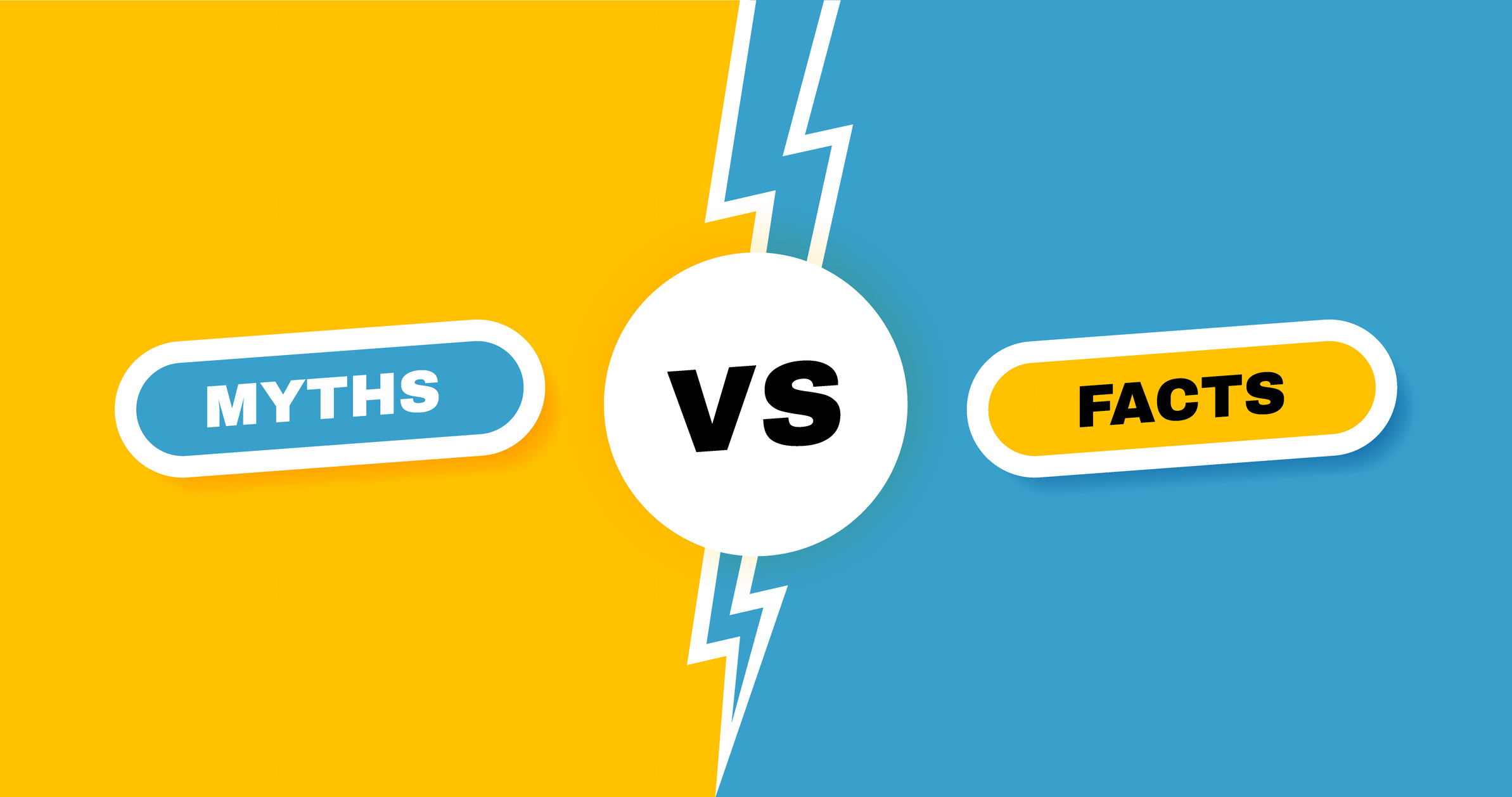Don't Fall For These Five Costly Medicare Myths
Signing up for Medicare can be complicated, and mistakes can be costly. Let's demystify these five Medicare myths to avoid expensive penalties.


Becoming eligible to sign up for Medicare when you turn 65 is a rite of passage in the American retirement. However, unlike applying for Social Security benefits, the process of signing up for Medicare is more rigid and has more rules and consequential deadlines. After all, Medicare requires you to pay premiums monthly, while Social Security pays a deposit to you each month.
Medicare plays a crucial role in covering the healthcare costs for the 68.5 million beneficiaries, of whom 90.1% are 65 and older, according to the Medicare Monthly Enrollment data for February 2025.
Misinformation about Medicare is all around, from social media posts to advice from well-meaning coworkers. This tendency, combined with Medicare's complex initial enrollment rules and the stress often associated with the years leading up to retirement, can lead to costly mistakes and unexpected expenses.
From just $107.88 $24.99 for Kiplinger Personal Finance
Become a smarter, better informed investor. Subscribe from just $107.88 $24.99, plus get up to 4 Special Issues

Sign up for Kiplinger’s Free Newsletters
Profit and prosper with the best of expert advice on investing, taxes, retirement, personal finance and more - straight to your e-mail.
Profit and prosper with the best of expert advice - straight to your e-mail.
Don't believe these five Medicare myths listed below.
Myth #1- Medicare is free

Indeed, most people don’t pay a premium for Part A coverage, which is sometimes referred to as “premium-free Part A.” But that is the only part of Medicare that doesn't have a premium if you qualify.
Part A. You will not pay for Part A as long as you are 65 or older and you or your current or former spouse paid Medicare taxes while working for at least 10 years; otherwise, you will pay a premium for this coverage. In 2025, Medicare beneficiaries have a $1,676 Part A deductible.
Part B. Medicare Part B has a base monthly premium of $185 for most people. High earners pay an income-related monthly adjustment amount (IRMAA). For these beneficiaries, total Monthly Part B premiums, including the surcharge, will range from $259.00 to $628.90. These surcharges apply to enrollees in Original Medicare and Medicare Advantage plans.
PART D. For the first 40 or so years of Medicare, there was no outpatient prescription drug coverage. The Medicare Prescription Drug, Improvement, and Modernization Act of 2003 (MMA) added a voluntary prescription drug benefit, Medicare Part D.
If you have Original Medicare and you want prescription drug coverage, you will need to enroll in a Part D plan. The majority of Medicare Advantage (MA) plans include Part D coverage, providing both medical and prescription drug benefits in one plan. However, if yours does not, you'll need to buy a stand-alone Part D policy.
A surcharge for high earners also applies to your Medicare drug coverage (Part D). In 2025, you’ll pay an extra amount in addition to your plan premium if your 2023 AGI is above $106,000 if you are single, or $212,000 if you’re married and file jointly. That surcharge ranges from $13.70 to $85.80.
Medicare Advantage premiums. Some MA plans charge an additional premium. Depending on the plan you choose, the monthly premium, in addition to Part B, will vary. The average monthly premium is $17.00 in 2025, down $1.23 from $18.23 in 2024.
Myth #2 You can enroll in Medicare at any point after you turn 65

The Initial Enrollment Period for Medicare (IEP) is a seven-month window around your 65th birthday, the three months before, the month of, and the three months after. Most people sign up for Medicare in this window.
It’s important to sign up for Medicare coverage during your IEP, unless you have other coverage. Failure to sign up during this time can result in gaps in your medical coverage and late enrollment penalties.
Medicare General Enrollment Period (GEP). If you missed your IEP, you can still enroll in Original Medicare; you will pay late enrollment penalties that are based on how long you waited to file after you turned 65 or lost your employer-provided health insurance. This enrollment period runs from January 1 through March 31 each year.
Be aware that the General Enrollment Period only allows you to enroll in Original Medicare. If you want to enroll in an MA plan, you’ll have to wait for the Annual Enrollment Period (AEP) that is discussed in more detail below.
If you first enroll in Original Medicare during the GEP, you have a Special Enrollment Period (SEP) to join a Part D plan starting the date you submit your application for premium Part A or Part B coverage. The SEP lasts for the first two months of enrollment in premium Part A or Part B.
Part B late enrollment penalty. This penalty adds an extra 10% to your monthly premium for each year you could have signed up for Part B, but didn’t.
Part D late enrollment penalty. You’ll pay an extra 1% for each month, or 12% a year, if you either: don’t join a Medicare Part D drug plan when you first get Medicare, or go 63 days or more without creditable drug coverage.
However, you may be able to avoid penalties if you have insurance through your employer at 65 and enroll in Medicare as soon as you lose this coverage. Otherwise, the only way to avoid these penalties is to see if you qualify for a Special Enrollment Period (SEP).
Medicare Supplement (Medigap) Open Enrollment Period. While there is no penalty for not signing up for a Medigap policy during your IEP, you will lose out on enrolling without having to undergo underwriting. The underwriting process can result in higher premiums, as it takes into account your health and lifestyle.
Once you are enrolled in Medicare Parts A and B, you will also qualify for a 6-month open enrollment period for Medigap plans. This starts with your Part B effective date and is a one-time election period. You can enroll in any Medigap plan that you like, with no health questions asked.
What’s most important to know about this enrollment period is that it happens only once for most people. However, states can choose to establish Medigap protections that go further than the minimum federal standards. Check with your SHIP (State Health Insurance Assistance Program) to find out if your state gives you more rights and opportunities to buy Medigap policies outside of the six-month window without underwriting.
Myth #3- You will be automatically enrolled in Medicare when you turn 65

This myth has a kernel of truth to it. If you have already claimed Social Security benefits at least four months before becoming eligible for Medicare, you will be automatically enrolled in Parts A and B. If not, you'll be responsible for applying within the seven-month IEP or later if you have employer-provided health insurance.
If you don't apply within the required timeframe, you'll be subject to those steep late enrollment penalties mentioned above.
Myth #4- You can't change your Medicare plan after you sign up

If there is one thing you can be sure of, you will have the opportunity to change your plan every year. In some cases, you will have multiple chances to change your coverage both inside and outside of the enrollment periods that occur annually.
Annual Open Enrollment Period. This happens every year from October 15 to December 7. During this time, you can switch from your Original Medicare plan to a Medicare Advantage plan or vice versa. If you have a Medicare Advantage plan, you can switch to a different Medicare Advantage plan. And, you can also choose a new Part D plan. If you switch your plan during this window, your new coverage will take effect on January 1 of the following year. If you make no changes, your current selections will be automatically renewed.
The Medicare Advantage Open Enrollment Period. This enrollment period happens annually from January 1 through March 31. If you are enrolled in a Medicare Advantage plan and, for any reason, you don’t like it, you can disenroll from your current plan and either return to Original Medicare and elect a Part D drug plan or switch to a different MA plan.
Medicare Special Enrollment Period (SEP). A Special Enrollment Period (SEP) is a time outside of the regular enrollment periods during which Medicare beneficiaries have an opportunity to enroll in or make changes to their Medicare coverage. SEPs are available to individuals who experience certain qualifying life events or meet specific criteria. You can make changes to your Medicare Advantage or Part D prescription drug coverage when certain events happen in your life. Those events include moving or losing other insurance coverage, such as your or your spouse's employer-provided coverage.
Read Missed Medicare Open Enrollment? Here Are Your Options to get more details about what types of life events qualify for the Special Enrollment Period.
Myth #5- Medicare is the only health insurance policy you need in retirement
Original Medicare doesn’t cover everything; the coverage gap is often called the “doughnut hole.” Part B pays for only 80% of doctors’ visits and other outpatient services. In addition, Medicare doesn’t cover supplemental services such as dental care, eye appointments, or hearing aids. You have two options to deal with your uncovered expenses. You can purchase Medigap insurance to complement your Original Medicare insurance or enroll in a Medicare Advantage plan.
Read What’s the Best Medigap Plan? to find out more about the 10 different Medigap plans you can choose from.
Set your calendar, enrollment missteps can be expensive

Medicare plays an important part in covering most people's healthcare costs during their retirement. If you overlook your initial enrollment period, you will pay late enrollment penalties every month you pay your Medicare premiums.
You can also lose money on higher-than-necessary premiums or out-of-pocket costs if you are enrolled in a Medicare Advantage plan and don't shop around during your annual enrollment periods. While MA plans must cover everything traditional Medicare does, participants in MA plans are restricted to networks of providers and hospitals that can change every plan year.
For instance, you could be left paying out-of-network fees to see your preferred health care provider if they are no longer in your network.
Related Content
Profit and prosper with the best of Kiplinger's advice on investing, taxes, retirement, personal finance and much more. Delivered daily. Enter your email in the box and click Sign Me Up.

Donna joined Kiplinger as a personal finance writer in 2023. She spent more than a decade as the contributing editor of J.K.Lasser's Your Income Tax Guide and edited state specific legal treatises at ALM Media. She has shared her expertise as a guest on Bloomberg, CNN, Fox, NPR, CNBC and many other media outlets around the nation. She is a graduate of Brooklyn Law School and the University at Buffalo.
-
 Forget FIRE: Why ‘FILE’ Is the Smarter Move for Child-Free DINKs
Forget FIRE: Why ‘FILE’ Is the Smarter Move for Child-Free DINKsHow shifting from "Retiring Early" to "Living Early" allows child-free adults to enjoy their wealth while they’re still young enough to use it.
-
 7 Tax Blunders to Avoid in Your First Year of Retirement
7 Tax Blunders to Avoid in Your First Year of RetirementA business-as-usual approach to taxes in the first year of retirement can lead to silly trip-ups that erode your nest egg. Here are seven common goofs to avoid.
-
 How to Plan for Social Security in 2026's Changing Landscape
How to Plan for Social Security in 2026's Changing LandscapeNot understanding how the upcoming changes in 2026 might affect you could put your financial security in retirement at risk. This is what you need to know.
-
 Forget FIRE: Why ‘FILE’ Is the Smarter Move for Child-Free DINKs
Forget FIRE: Why ‘FILE’ Is the Smarter Move for Child-Free DINKsHow shifting from "Retiring Early" to "Living Early" allows child-free adults to enjoy their wealth while they’re still young enough to use it.
-
 7 Tax Blunders to Avoid in Your First Year of Retirement, From a Seasoned Financial Planner
7 Tax Blunders to Avoid in Your First Year of Retirement, From a Seasoned Financial PlannerA business-as-usual approach to taxes in the first year of retirement can lead to silly trip-ups that erode your nest egg. Here are seven common goofs to avoid.
-
 How to Plan for Social Security in 2026's Changing Landscape, From a Financial Professional
How to Plan for Social Security in 2026's Changing Landscape, From a Financial ProfessionalNot understanding how the upcoming changes in 2026 might affect you could put your financial security in retirement at risk. This is what you need to know.
-
 Healthy to 100: Secrets from Countries Where Retirees Age Best
Healthy to 100: Secrets from Countries Where Retirees Age BestLongevity is a team sport, according to author Ken Stern. Here's the secret sauce for living long, healthy lives from countries like Italy and Japan.
-
 My First $1 Million: Semiretired CPA, 68, San Francisco
My First $1 Million: Semiretired CPA, 68, San FranciscoEver wonder how someone who's made a million dollars or more did it? Kiplinger's My First $1 Million series uncovers the answers.
-
 6 Overlooked Areas That Can Make or Break Your Retirement, From a Retirement Adviser
6 Overlooked Areas That Can Make or Break Your Retirement, From a Retirement AdviserIf you're heading into retirement with scattered and uncertain plans, distilling them into these six areas can ensure you thrive in later life.
-
 I'm a Wealth Adviser: These Are the 7 Risks Your Retirement Plan Should Address
I'm a Wealth Adviser: These Are the 7 Risks Your Retirement Plan Should AddressYour retirement needs to be able to withstand several major threats, including inflation, longevity, long-term care costs, market swings and more.
-
 Tip: Ways to Track Your Credit Card Rewards
Tip: Ways to Track Your Credit Card RewardsHere are the best strategies and apps to help you stay current with your credit card rewards.